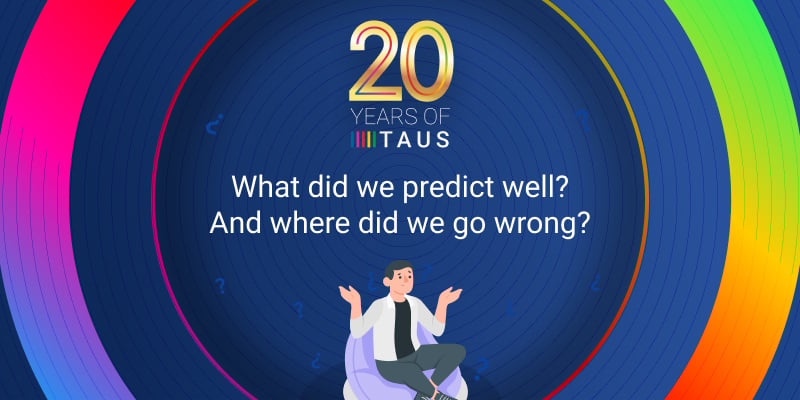What is creative content?

The term ‘creative content’ is used a lot but what does it really mean? And, as a global company, how do you handle creative content translation?
The term ‘creative content’ is used a lot but what does it really mean? And, as a global company, how do you handle creative content translation? How does the translation process differ from regular translation? What type of translator do you use? How does the terminology differ? Is the creative content industry specific? Let's explore these questions in more detail.
The Content
For starters, I think we can define creative content as content that needs to be translated creatively. But why, you might ask?
Well, if we translate faithfully to the original source language, it might sound unnatural and be an obvious ‘translation’. It also might not work for a specific country, audience group or market. While the accuracy, meaning and message need to reflect the original content, the translated result needs to work in the target language. Not a small task!
I find that organizations ask for creative content translation when the following types of content are involved: websites (CTA, Landing Pages), email campaigns and banners (offers), collateral material (advantages of a product), videos (promotional) and blogs (opinion pieces).
The reason being that the purpose of these content types is to ‘persuade’ a customer or an end-user to ‘engage’ with the brand and purchase products or services. A simple translation might miss key elements that resonate with the customers’ needs and lead to a transaction.
Therefore, I would say that it’s the content type (that is, customer-facing content) and purpose (marketing/product related pieces) that determines the need for transcreation.
The Translator
The translator has to take into account not only the message in the source language and get it translated, but also look at the entire project with a particular target audience in mind and ‘translate’ and ‘re-create’ the content for the target audience. In other words, ‘transcreate’ from the source language into the target language.
For transcreation projects SimulTrans use translators who are native, living in-country, qualified professionals with at least five years’ experience in the marketing translation field and who have a flair for transcreation.
I am of the opinion that not all translators are the same, some are simply better at translating marketing and have a ‘gift’ with words; and that shows!
The Buyer
Who would need transcreation services, you might wonder?
Well, marketeers as it turns out! Why? Marketeers spend a great deal of time, money and effort creating content in the source language. When organizations go global and need to get their message across, they do not want a simple word for word translation as the content will no longer be able to carry out its purpose, which is to persuade customers.
Marketeers are looking for something crafted in the target language itself that will resonate with their target audience (gender, age group, spending power, etc.) in that particular locale. They expect the translator to understand the brand, research the target market but at the same time maintain the brand identity.
I believe that anybody in a creative department would consider transcreation a necessity for a company who wants to engage global customers.
The Industry
Do technical or pharmaceutical companies need content to be translated ‘creatively’?
Yes I say! For instance, a manufacturing company will need their product guides translated, their software localized and their marketing transcreated. The same can be said for a medical device company. While they want top-notch medical translators to translate their product and user guides, they might also want their marketing collateral to have more flair.
I believe that the type of industry your company operates in does not determine the need for transcreation, but rather, the type of content you are producing and the purpose of that content.
The Process
Here is the traditional way of translating:

And what we are doing nowadays:

Enough said!
Pricing
Ah, we’ve got to the sticky part...
Yes, transcreation is more expensive, what with all the extra research and consideration a translator has to put into the translation and fewer good translators available to do the work!
Pricing models might vary from a per word cost, to an hourly rate with a variable throughput depending on the target language.
If you are considering going global, transcreation is a must to ensure your customer-facing creative content has a locale-specific ‘voice’, which will elicit the intended response in your target customer.
Quality
Finally, let’s talk quality.
How do you evaluate the quality of creative content? Is the quality expectation higher, lower or just different for this type of content?
In a “traditional” project, a review process (i.e. a second linguist reviewing the work of the translator) will check at a minimum the following items (these are typical of any language quality review form in the industry):
- Terminology
- Format/functionality
- Punctuation/spelling
- Style/grammar/syntax
- Hyphenation/Punctuation/Quotation Marks
- Special Characters
- Date and Time format/Measurements/Numbers
- Telephone numbers/Technical numbers
- Company specific information/Copyright and Trademarks
- Accuracy
But for transcreation we check other items as well:
- User target group
- Tone of voice
- Bias free language
- Meaning
- Style
- SEO Keywords
Funnily enough, the more pressing issue in the industry right now is that of Quality Evaluation. And the BIG question is: do we have time for it?

Margarita serves as SimulTrans’ Director responsible for European sales. She travels frequently throughout Europe, advising clients on best practices in the industry and helping them successfully localize their products for a global market. Margarita has spent over 20 years in the localization industry. She is passionate about customer service, process efficiencies and problem resolution and has a particularly interest in tools and technologies, digital marketing, and training & development of new sales people. She contributes to the Localisation Resource Centre as part of the panel to select a winner of the best thesis award in an area relevant to internationalization and localization. Margarita is involved with the Professional Women’s Network and Women in Localization. A native of Spain, Margarita speaks Spanish, Galician, and English fluently and is additionally familiar with Italian and Portuguese.
 by Dace Dzeguze
by Dace Dzeguze


